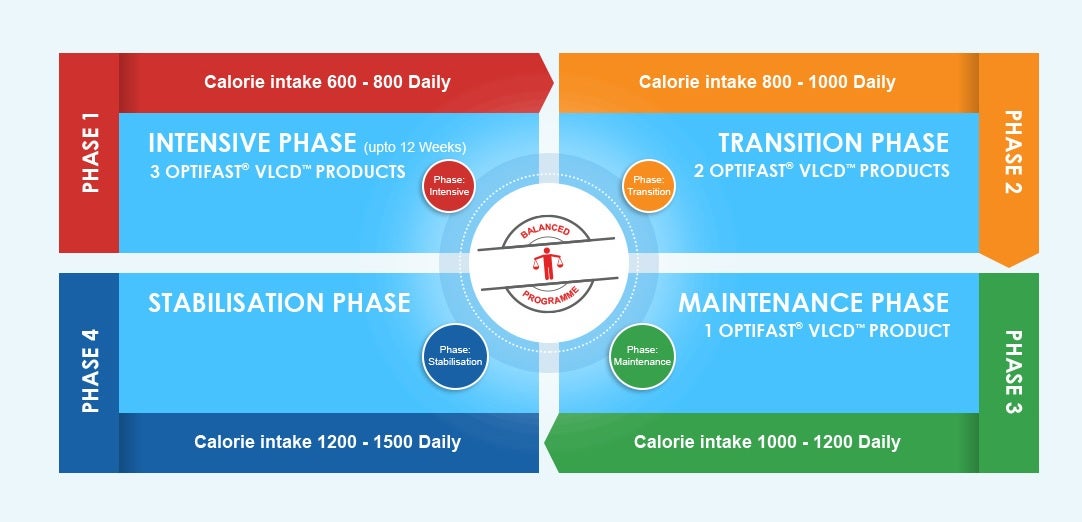THE OPTIFAST® VLCD™ PROGRAM
Weight loss with the OPTIFAST® VLCD™ Program Intensive phase is achieved by the restriction of carbohydrate and total energy intake. This enables your body to use its fat stores as energy via a process called Ketosis. OPTIFAST® VLCD™ products contain carbohydrates, fatty acids and protein, which helps preserve lean body mass while you lose your fat stores. They also contain vitamins and minerals to ensure that you are receiving all the nutrients you require for a safe and healthy calorie restricted diet. OPTIFAST® VLCD™ is available in a wide range of products such as soups, shakes, bars and desserts, in a variety of flavours
OPTIFAST® VLCD™ PROGRAM WEIGHT LOSS PHASES

